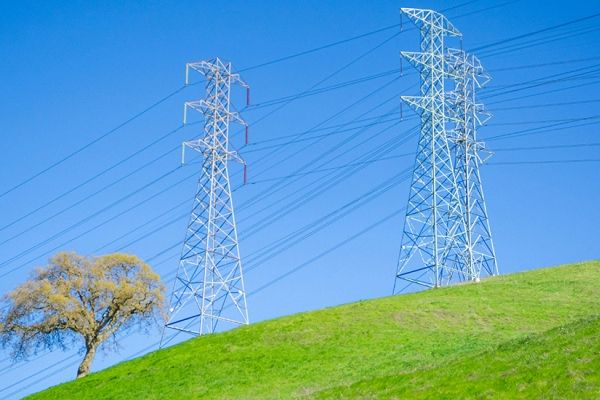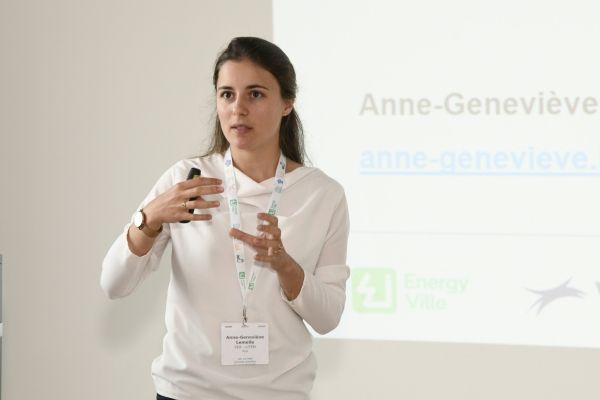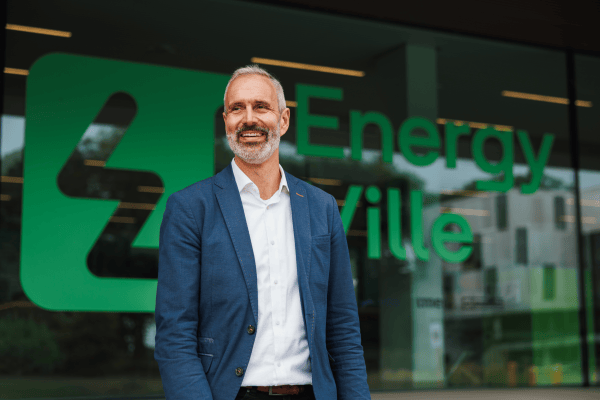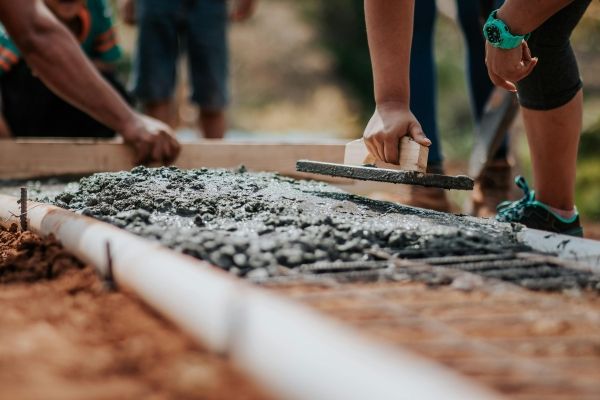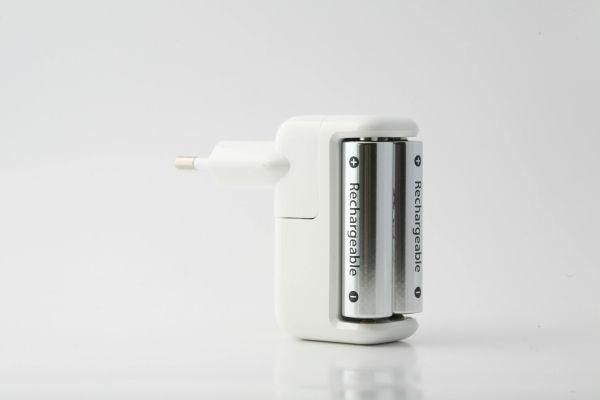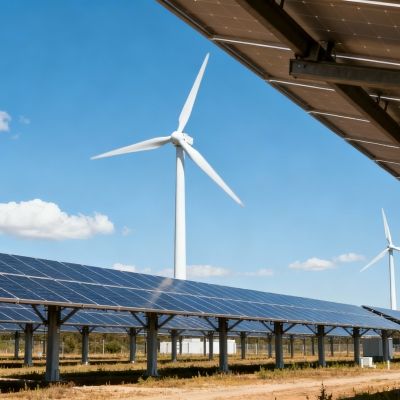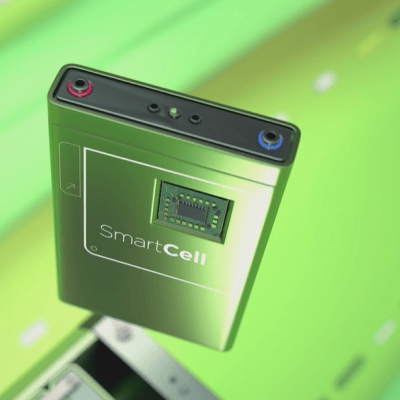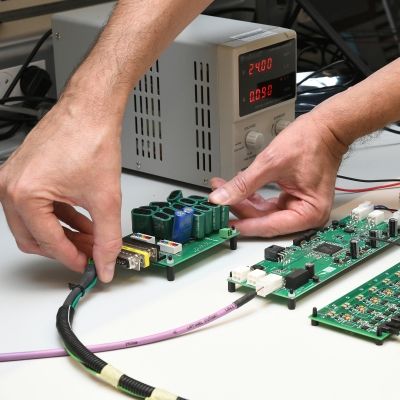Open Thor Living Lab: The living, working and lifestyle of the future
The transition to sustainable energy sources and energy efficiency requires an integrated approach for innovative solutions, involving collaboration among businesses, academic institutions, citizens, and governments. Thor Park, located in Genk, Belgium, is a remarkable site that embraces this approach and plays an essential role in accelerating the energy transition. Discover in this article how the site bid farewell to its mining past and is evolving into a contemporary hub for technology, innovation, and sustainability.
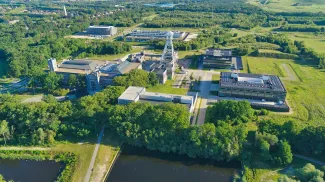
Innovation is the new black gold
Thor Park in Genk is alive. The site symbolizes Europe's transition from an industrial society to a greener and more knowledge-intensive economy. A prime example is the Open Thor Living Lab, a collaboration between EnergyVille, the city of Genk, and Thor Park NV, where innovative solutions are tested in a real environment - as opposed to a controlled laboratory space. Gerrit Jan Schaeffer, General Manager of EnergyVille, explains the necessity of such research:

"To achieve the energy transition, it is not enough to conceive innovative technologies; these must also be successfully brought to market as products. That is why, at VITO/EnergyVille, we focus on establishing a living lab, where companies can develop and test their products and services in a real setting. This way, we co-create new renovation techniques, optimize electric charging, and explore solar cell integration into various materials in a large-scale testbed."
The European Network of Living Labs (ENoLL) currently counts more than 480 living labs. Since the 1990s, such open innovation environments have been emerging, where citizens, industry, academic institutions, and government collaborate within the so-called 'quadruple helix.' This collaboration extends beyond testing new energy solutions to innovations in healthcare, agriculture, and media. Thanks to the real-world environment, user engagement, and rapid feedback, prototypes and innovative ideas in a living lab can be developed and optimized more efficiently.
"The Open Thor Living Lab is a unique ecosystem, emphasizes Annick Vastiau, VITO/EnergyVille project manager. The living lab encompasses various zones: a residential area, a science and business park, and the buildings and grounds of KRC Genk. This combination is unique and allows for aligning the (often-complementary) energy needs of different stakeholders. Families, employees, or football stadiums do not always use energy at the same time. Therefore, energy consumption can often be better optimized as a whole, rather than individually—such as through the sharing of energy surpluses."
Additionally, the site has a strong connection with EnergyVille, where KU Leuven, VITO, imec, and UHasselt have brought together their energy research. This enables the exchange of expertise with companies and governments actively involved in the energy transition. Finally, the Open Thor Living Lab strongly focuses on building permanent infrastructure. Unlike the setup and testing of pilot projects, the aim with our infrastructure is to create a more permanent, sustainable and realistic environment for testing and demonstrating innovative energy solutions.
And the backbone of all this? State-of-the-art technology for finding energy solutions at the European top level, integrated into EnergyVille's central data platform 'SmarThor.'
Residential innovation for sustainable neighborhoods
An illustration of such overarching collaboration is found in the residential areas next to Thor Park. In late 2021, the European project oPEN Lab was initiated, with Genk taking the lead. Over thirty family homes in the social housing estate 'Nieuw Texas' and the former miners' neighborhood 'Waterschei' are undergoing a collective renovation concept, incorporating the latest techniques in heating, ventilation, and energy storage.
Moreover, (integrated) solar panels contribute to collective energy production, which can also be stored in the neighborhood battery. The project ultimately aims to create 'Positive Energy Neighborhoods' (PENs): urban areas that emit net-zero greenhouse gas emissions and are net energy suppliers annually – in other words, capable of producing more energy than they consume. Testing such positive energy neighborhoods is crucial for both businesses and governments to find the optimal balance between renovations at the building or neighbourhood level. Maarten De Groote, VITO/EnergyVille project coordinator of oPEN Lab:
"Here, we are building the neighbourhood of the future. Approaching the renovation of homes, charging of electric cars, heating with a heat pump, and location of solar panels individually is inefficient, costly, and detrimental to the local electricity grid. Furthermore, individual technologies can already be tested very precisely by the manufacturer. We must move away from such an approach and evolve toward a societal optimum where innovative technologies and techniques are integrated. The interactions with user profiles and other technologies like batteries, solar energy, electric vehicles, ... is where EnergyVille can offer expertise to commercial actors. In the oPEN Lab project, we apply this integrated approach in real-life and explore how we can optimally control energy systems as a whole."
At the core of the project is real-time monitoring of the homes before and after the renovations, including energy consumption, indoor and outdoor climate, and human behaviour. This allows the interaction between technologies to be examined, evaluated, and potentially adjusted. To accelerate the design and construction process, a 'digital twin' of the neighbourhood is also being created. This virtual representation enables the examination of the effects of interventions in a digital simulation before applying them to the homes themselves. Later, the same digital simulation can be compared with real-life effects to optimize its representation. This converges into useful tools, such as the Flemish digital neighbourhood renovation tool which can digitally map the renovation needs of entire neighbourhoods at once.
This 'PEN concept' is not only being realized in Genk but also in Pamplona (Spain) and Tartu (Estonia). In addition to the residential areas in the Open Thor Living Lab, the project therefore also includes optimizing renovations of tertiary and apartment buildings.
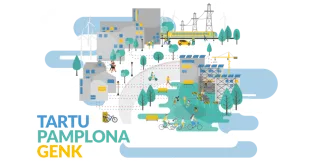
Moreover, what makes this project unique is the emphasis on social cohesion: residents are actively involved in shaping their neighbourhoods through information sessions, meetings, and social activities. The design of the renovation was co-creatively developed, and the involved companies are challenged to improve their solutions. Thus, an essential aspect of a living lab is consciously considered: the success of a technology is more than the technology itself; you need a foundation and therefore social innovation.
The oPEN lab project runs until 2026, but the residential living lab remains a permanent presence at the Open Thor Park, thanks to the structural collaborations with the city of Genk and the housing company "Wonen in Limburg".
Industrial groundbreaking solutions
In addition to renovations in individual homes or entire neighbourhoods, the way we provide, use, and distribute energy in those neighbourhoods, cities, and countries will undergo significant changes. The current infrastructure will likely need to change for this, and it will also be necessary to manufacture future products and technologies in an environmentally friendly and affordable manner. Here are some examples of how the Open Thor Living Lab integrates groundbreaking solutions in the areas of electric charging infrastructure, thermal energy, solar energy, and the manufacturing industry.
With the electrification of personal vehicles and a resulting increase in vehicles charging simultaneously, the chance of peak loads on the electricity grid rises. However, the current electricity networks and infrastructure are not equipped for this. Either the network infrastructure must be drastically adjusted, or the load on the network must be balanced, for example, by flexibly or 'smartly' charging vehicles. At the Open Thor Living Lab, the possibilities, and limitations of this second strategy are explored through the smart control of electric charging stations. Through an identification system at the charging stations, the user profile and electric charging can be flexibly controlled. Smart charging strategies can be tested in practice based on weather forecasts (and their impact on the local generation of solar energy) and market prices (from EPEX BE, the Belgian part of the European electricity market). For example, the ConnectSME project supported small and medium-sized enterprises (SMEs) in Flanders and the Netherlands in testing their smart charging solutions. In Genk, it was investigated how the cost of a charging session - based on the available (renewable) electricity - can stimulate flexible charging and how the use of electric vehicles as batteries via a 'vehicle-to-grid' charging station can relieve the electricity grid.
Before electricity can be distributed in a smart way, it must, of course, be generated first. The demand for sustainable electricity is expected to continue growing, as the transition to a carbon-neutral future requires significant electrification of our energy system. An elegant step in this direction is the integration of solar panels on various unused surfaces. Therefore, EnergyVille is. Amongst others, researching sound barriers with integrated solar cells, which can be placed along highways and cycle paths. The feasibility of such walls through traditional production processes is being tested, along with the optimization of materials used and the predictability of energy production. Meanwhile, SOLTECH, a spin-off of EnergyVille/imec specializing in solar cell integration in various surfaces, moved from Tienen to Genk. With the investment in a state-of-the-art factory and offices, SOLTECH hopes to realize their motto 'turn anything into a solar panel' in the sustainable and innovative environment of the Open Thor Park Living Lab. Bas van de Kreeke, CEO of SOLTECH, states:
"The proximity of EnergyVille is a definite asset for our R&D department. We collaborate closely in various research projects, with SOLTECH being the final link in commercializing new PV products. The residential areas of the oPEN Lab project, just a stone's throw from our production location, offer us a unique environment to test our market-ready products on a larger scale and under real-life conditions for the first time. Lastly, Thor Park creates an excellent working environment, surrounded by greenery and with numerous companies and research institutions all sharing the same mission: contributing to a better world!"
In addition to electricity generation and distribution, heat distribution can also be optimized at the city level (or higher) through large-scale heat networks. In 2024-2025, CollecThor (EnergyVille/VITO) will be rolled out for this purpose; an innovative low-temperature network that optimizes heat and cold exchanges between nearby buildings on the Thor Science Park, in an environmentally friendly manner. This network will offer both heating and cooling to buildings and thermal energy storage in the subsurface, at a depth of 65 meters or more through 'aquifers.' Furthermore, the network is modular, meaning it can easily be expanded and adapted to growing needs. With a smart control system, it also creates unique opportunities for research and the option for companies to offer 'energy-as-a-service'.
The Open Thor Living Lab is also exploring the optimization of more environmentally friendly and affordable production processes. Last year, the construction of FacThory began, a multifunctional building for smart manufacturing companies. Start-ups, scale-ups, and mature companies can use it to develop and test processes for automation, digitization, and robotics. Additionally, two initiatives are underway to specifically improve and innovate the construction sector; the twin testing environment THOREAQ (EnergyVille/VITO) inhabited by virtual residents where home renovations and air quality can be tested side by side, and ConstrucThor (EnergyVille/KU Leuven), a research building for climate-neutral construction. In this way, with the support of Flemish subsidies, all three aim to accelerate innovations in sustainable technologies. Minister Jo Brouns places their importance into context:
"FacThory offers opportunities for smaller companies to test ideas or developments on a larger scale, so they can grow more quickly into a new application in the industry. With ConstrucThor, we are developing the construction techniques of tomorrow, making it more affordable for the Flemish by working more efficiently, and we are further establishing Thor Park and EnergyVille in Genk as experts in sustainable and circular technologies."
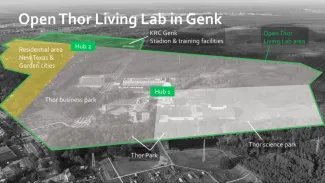
Recreational collaboration for energy
In addition to optimizing energy consumption during and after working hours, the Open Thor Living Lab also explores another type of energy flow: short peaks in energy needs and how to facilitate them. Consider the specific requirements of a football stadium, field heating in winter, beer cooling in summer, and high electricity consumption during football matches. In September, KRC Genk, EnergyVille, the city of Genk, and Thor Park NV signed a Letter of Intent, with KRC Genk officially joining the Open Thor Living Lab as a crucial infrastructure partner, adding an extra profile and unique innovative challenges. Thus, the living lab can further optimize energy needs and surpluses with those of the surrounding residential areas and the science and business park.
Thanks to such bundled innovations, Flanders is taking a strong position on the European innovation map through the Open Thor Living Lab. The current test environments will soon no longer be testing environments but a place where people like you and me live and work together.
Are you interested in shaping the technologies of tomorrow by developing your service or product within this ecosystem? Visit the Open Thor Living Lab website or contact openthor@energyville.be.
Or to better align the objectives and investments of the living lab with the needs of your company, we kindly invite you to participate in a short survey (Dutch only).



